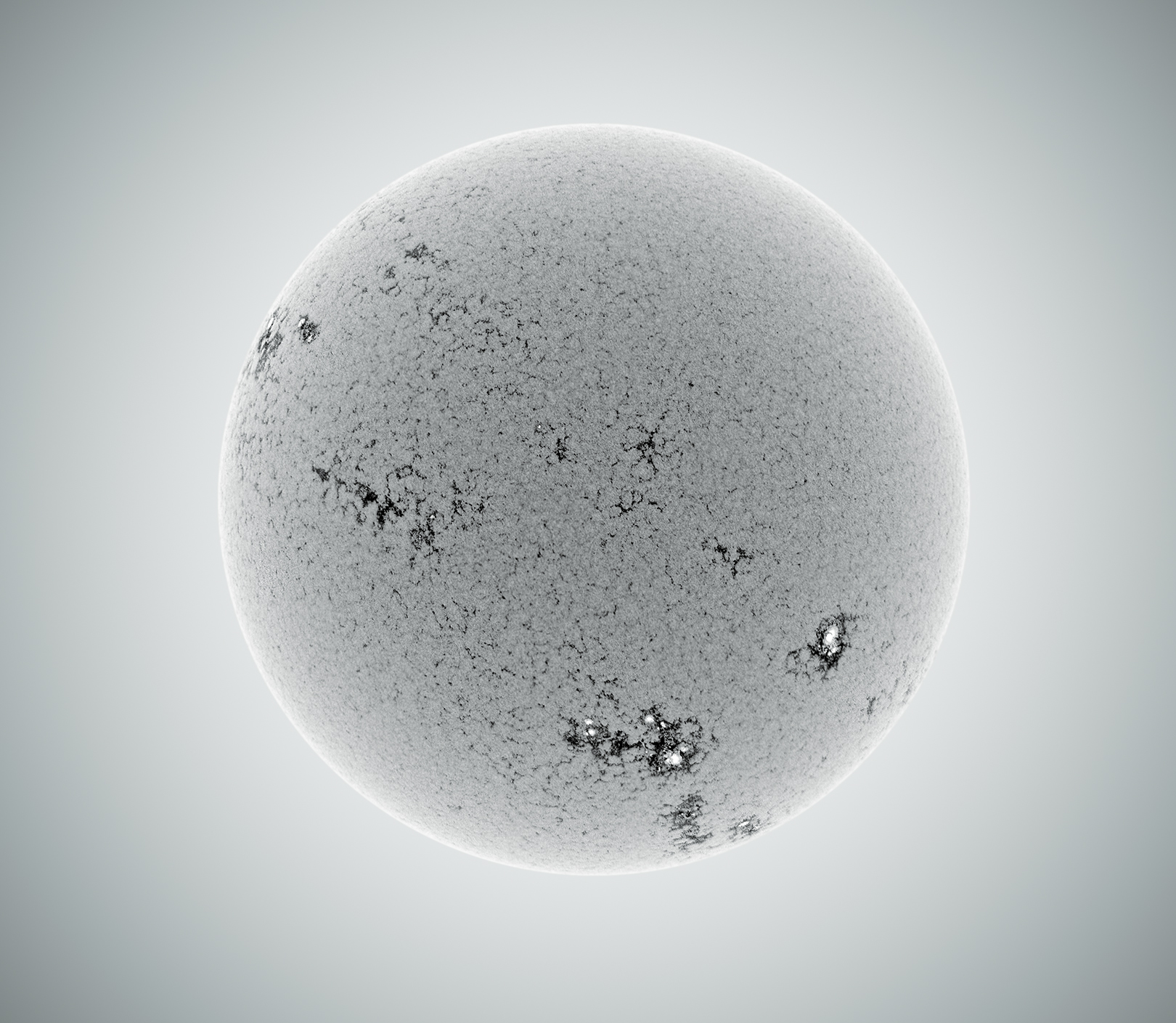The Sun
Photographer Alan Friedman documents the sun’s many faces using telescopes, filters, cameras, and computer software.

Alan Friedman captured this image on September 7, 2014, using a PGR Grasshopper Express 6 megapixel camera and a 90mm Coronado calcium-K telescope (provided courtesy of Dennis Zywiczynski). Friedman inverted the tonality of the sun's surface so that the cooler regions appear lighter and the hotter regions darker. Credit: Alan Friedman
If you look through the telescope that photographer Alan Friedman used to take the image above, you’ll see only a hint of violet—if you see anything at all. Equipped with a calcium potassium filter, the telescope lets in radiation right on the edge of ultraviolet, which the eye can have a hard time distinguishing.
Luckily, a camera can draw out what the eye misses.
To create solar portraits like this (you can see others on Friedman’s Tumblr, Averted Imagination), Friedman attaches his camera—specifically, an industrial streaming device that he describes as a “webcam on steroids”—to the telescope’s viewfinder, which he focuses on the sun using a computer. He then records video for a minute or two at a time, trying to capture moments of steadiness in the atmosphere. From that video footage, Friedman uses software to pick out the sharpest frames, reviews those, and merges multiple together, then further cleans up the mosaic to get rid of noise—a process that can take several hours.
Different telescope filters allow Friedman to focus on different features of the sun. For instance, the calcium potassium filter used to make the featured picture captures waves that radiate from an area called the chromosphere, just above the surface of the sun. Friedman more often uses a hydrogen alpha filter, which helps him record the prominences, filaments, and whirling “solar atmosphere” of hydrogen that emanates radiation in the deep red region of the visible spectrum.
To highlight the sun’s details, Friedman sometimes inverts the picture’s tones. In the shot above, for example, the sunspots—which are about 500 degrees Fahrenheit cooler than the surface of the sun—show up white while the hotter areas are darker.
“I straddle the fence between science and art,” says Friedman. Inverting tones or adding color can highlight features and lend individuality to the portrait. “My images look a little different because I explore different qualities in the photograph, not just the scientific data,” he says.

His pictures are hard-won. Unlike satellites, which can take crisp photos of space from the comfort of an earth orbit, Friedman operates in his backyard in Buffalo, New York, where he contends with intrusions such as telephone wires, heat radiating off rooftops, the jet stream, and other atmospheric disturbances.
“The atmosphere is a distorting filter that makes it very difficult to take close-up pictures,” he says. When conditions are suitable, he can home in on, say, a few sunspots, but more often he takes a wider view of the entire sun. “The key to what I do is to try to take the picture that can be taken that day,” he says.
Whatever the challenges, “I try to make a compelling story”—one that reveals the sun’s ever-changing drama. “If the story’s compelling, people will pay attention,” he says, “And if they pay attention, they’ll probably have more interest in science than they did before.”
*This article was updated on May 8, 2015, to reflect the following change: One of the telescopes that Friedman uses was identified as a calcium potassium telescope. It is a calcium-K telescope (potassium is not involved).